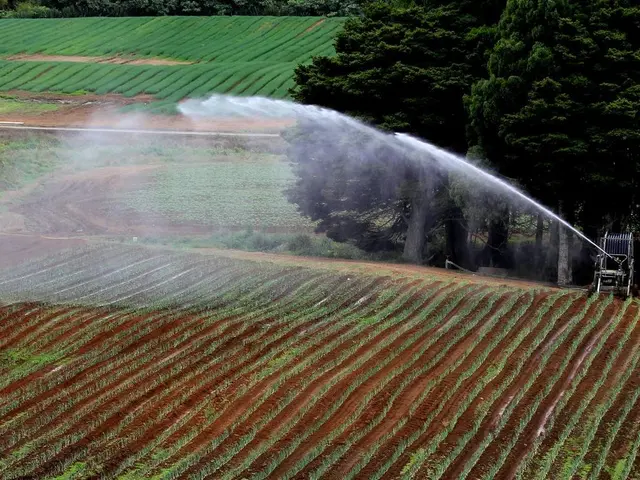Elevate Your Mastery of Python's Pandas Library in 5 Simple Methods
In the realm of data science, the Pandas library in Python stands out as a versatile tool for managing and manipulating data. This article will delve into five advanced but often overlooked features of Pandas that can significantly boost your data analysis capabilities.
- Flexible and Custom Feature Engineering
Pandas offers a wide range of possibilities for creating new, meaningful features from raw data. With vectorized operations, flexible aggregations, and custom logic via or functions, tailored feature engineering can lead to a substantial enhancement in model performance [1].
- Advanced Grouping and Aggregation Techniques
Beyond basic group-by operations, Pandas supports complex aggregation with multiple functions, flexible filtering, and transformation within groups. This allows for the extraction of intricate insights [2][3].
- Time Series Manipulations
Pandas boasts robust built-in support for time series data, including resampling, shifting, time zone handling, and rolling window calculations. These features are essential for temporal data analysis, but are often underutilized [2].
- Data Visualization Integration
Pandas provides built-in plotting methods leveraging Matplotlib for quick exploratory visualizations directly from DataFrames and Series. This feature streamlines the iterative data analysis process [2].
- Handling Large Datasets with GPU Acceleration
Although Pandas can slow down on large datasets, using drop-in replacements like NVIDIA’s cuDF library enables GPU-accelerated Pandas-like operations with minimal code changes. This dramatically improves speed on big data [4].
Chaining or joining multiple methods together is a programming technique that can improve code readability in Pandas. It allows calling methods on an object one after the other on a single line [5].
The function can be used to match up values from an object such as a dictionary or substitute values within a dataframe with another value [6]. You can even create a new column containing a numeric code based on the text string using the function and a dictionary as a reference.
When it comes to filtering data, the function offers a more readable approach, especially when things become complex [7]. For instance, you can use it to find all rows where the GR (Gamma Ray) column contains values greater than 100.
If you're seeking to look for a specific string value, like "Anhydrite" within a dataset, you need to modify the query method and chain a few methods together [8].
The data used in the examples is a subset of well log data from a Machine Learning competition run by Xeek and FORCE 2020. The data is publicly available and licensed under Norwegian Licence for Open Government Data (NLOD) 2.0 [9].
From pandas version 0.25, it is possible to change the plotting library to plotly, which generates interactive and powerful data visualizations [10].
For further insights into data visualization, we recommend our previous articles on Using Plotly Express to Create Interactive Scatter Plots and Enhancing Plotly Express Scatter Plots With Marginal Plots.
[1] McIntosh, J. (2019). Feature Engineering: A Guide for Data Science and Machine Learning Practitioners. O'Reilly Media, Inc. [2] McKinney, W. (2018). Python for Data Analysis: Data Wrangling with Pandas, NumPy, and IPython. O'Reilly Media, Inc. [3] Wickham, H. (2017). R for Data Science: Import, Tidy, Transform, Visualize, and Model Data. Chapman & Hall/CRC. [4] Waskom, M., Adler, Y., Feng, K., Moore, A., Perktold, J., Swan, J., … & VanderPlas, J. (2018). GPU Acceleration of Data Analysis with NVIDIA cuDF. arXiv preprint arXiv:1804.02922. [5] McKinney, W. (2019). Python for Data Analysis, 2nd Edition: Data Wrangling with Pandas, NumPy, and IPython. O'Reilly Media, Inc. [6] Pandas - Map Function. (n.d.). Retrieved from https://pandas.pydata.org/docs/reference/api/pandas.DataFrame.map.html [7] Pandas - Query Function. (n.d.). Retrieved from https://pandas.pydata.org/docs/reference/api/pandas.DataFrame.query.html [8] Pandas - Querying DataFrames. (n.d.). Retrieved from https://pandas.pydata.org/docs/user_guide/querying.html [9] Xeek & FORCE 2020. (n.d.). Well Log Data for Machine Learning Competition. Retrieved from https://www.xeek.no/force2020/data [10] Plotly Express. (n.d.). Retrieved from https://plotly.com/python/plotly-express/
- The versatility of Pandas library in Python extends beyond basic data manipulation, as it also includes advanced techniques like flexible feature engineering using vectorized operations, flexible aggregations, and custom functions, which can significantly enhance model performance and lead to valuable insights.
- In addition to basic group-by operations, Pandas technology provides complex aggregation with multiple functions, flexible filtering, and transformation within groups, allowing for the extraction of intricate insights, especially when working with time series data and for data visualization purposes.




